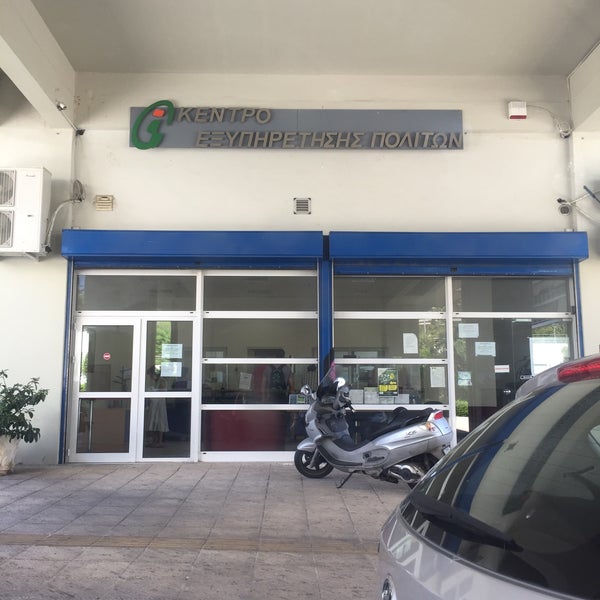The Future Of Family Planning: Examining Over-the-Counter Birth Control Post-Roe

Table of Contents
Increased Access and its Impact on Reproductive Health
The potential availability of over-the-counter birth control offers significant advantages for reproductive health. Increased access could revolutionize how individuals manage their reproductive lives.
Improved Convenience and Accessibility
Making birth control readily available without a prescription eliminates several key barriers to access:
- Eliminates doctor's appointments: Many individuals face challenges scheduling appointments, particularly those with limited time, transportation, or financial resources. Over-the-counter access removes this hurdle.
- Increased affordability: Insurance coverage for contraception varies widely, leaving many individuals with significant out-of-pocket expenses. Over-the-counter options can significantly reduce these costs, making birth control more accessible to low-income individuals and families.
- Reduced unintended pregnancies: Improved access to contraception is directly linked to a reduction in unintended pregnancies, contributing to better family planning and overall reproductive health outcomes. This includes various methods like oral contraceptives, the patch, and the vaginal ring, all potentially available over-the-counter.
Concerns Regarding Misinformation and Self-Medication
While increased access is beneficial, potential drawbacks must be addressed:
- Misinformation: The widespread availability of information, including misinformation, online necessitates robust educational campaigns. Accurate information about dosage, side effects, and potential interactions is crucial.
- Incorrect Usage: Improper use of birth control can lead to reduced efficacy and increased risk of unintended pregnancy. Clear and concise instructions are essential.
- Need for Educational Resources: Comprehensive educational materials, including online resources, brochures, and in-person consultations, are needed to ensure safe and effective use of over-the-counter birth control. These materials should be accessible and easy to understand.
- Medication Interactions: Some birth control methods can interact negatively with other medications. Clear labeling and patient education are vital to preventing harmful interactions.
The Role of the FDA in Regulating Over-the-Counter Birth Control
The Food and Drug Administration (FDA) plays a critical role in ensuring the safety and efficacy of over-the-counter birth control.
The FDA Approval Process and its Stringency
The FDA approval process for any drug, including over-the-counter birth control, is rigorous:
- Rigorous Testing: Extensive clinical trials are conducted to evaluate the safety and efficacy of the contraceptive method.
- Safety and Efficacy Standards: The FDA sets high standards for both safety and effectiveness before granting approval. This ensures that the product meets stringent quality control requirements.
- Potential Hurdles: Navigating the FDA approval process can be challenging, involving substantial time and resources. This process ensures consumer safety but can also delay the market entry of new over-the-counter options.
Ensuring Safe and Effective Use Through Labeling and Packaging
Clear and accessible information is vital:
- Clear Labeling: Packaging and labeling must be easy to understand and include clear instructions for use, potential side effects, and warnings about interactions with other medications.
- Patient Education Materials: Supplementing the labeling with readily available patient education materials in various formats (print, video, online) can further improve understanding and ensure safe use.
- Accessibility of Information: Ensuring the information provided is easily accessible to diverse populations, including those with limited literacy or language barriers, is crucial.
Economic and Social Implications of Wider Birth Control Availability
Increased access to over-the-counter birth control has broad economic and social ramifications.
Reduced Healthcare Costs
Wider access to contraception offers significant potential for cost savings:
- Lower Healthcare Expenditure: Fewer unintended pregnancies translate into reduced costs associated with prenatal care, childbirth, and related complications.
- Long-Term Cost Savings: The long-term economic benefits extend to the individuals, families, and the healthcare system as a whole.
Impact on Public Health Outcomes
The implications for public health are substantial:
- Reduced Unintended Pregnancies and Abortions: Improved access to contraception is directly linked to lower rates of both unintended pregnancies and induced abortions.
- Improved Maternal and Child Health: Reducing unintended pregnancies contributes to better maternal and child health outcomes.
- Reduced STIs: Increased contraceptive use can indirectly reduce the transmission of sexually transmitted infections.
Equity and Access in Underserved Communities
Ensuring equitable access is crucial:
- Addressing Disparities: Strategies must be implemented to overcome socioeconomic and geographic barriers that may limit access for underserved populations.
- Equitable Distribution: Targeted outreach programs and initiatives are necessary to ensure that over-the-counter birth control reaches all communities.
Conclusion
The shift towards over-the-counter birth control presents both opportunities and challenges for family planning in the post-Roe era. While increased access promises improved convenience, affordability, and public health outcomes, careful consideration must be given to the potential for misinformation, ensuring safe and effective use, and addressing equity concerns. The FDA's role in regulation and the development of clear educational materials are crucial to realizing the full benefits of over-the-counter birth control. By proactively addressing these issues, we can harness the potential of over-the-counter birth control to empower individuals and improve reproductive health for all. Further research and open dialogue surrounding over-the-counter birth control are vital to shaping a future where family planning choices are informed, accessible, and equitable. Continued discussion and advocacy for responsible access to over-the-counter birth control are essential.

Featured Posts
-
 Zaxaroplasteio Neas Smyrnis Stoxos Listeias Deite To Binteo
May 27, 2025
Zaxaroplasteio Neas Smyrnis Stoxos Listeias Deite To Binteo
May 27, 2025 -
 Dois Policiais Feridos Em Troca De Tiros Com Bandidos
May 27, 2025
Dois Policiais Feridos Em Troca De Tiros Com Bandidos
May 27, 2025 -
 Evrozonata Podkrepata Na Ets B Za Blgariya Spored Kristin Lagard
May 27, 2025
Evrozonata Podkrepata Na Ets B Za Blgariya Spored Kristin Lagard
May 27, 2025 -
 Open Ai Facing Ftc Investigation The Future Of Chat Gpt
May 27, 2025
Open Ai Facing Ftc Investigation The Future Of Chat Gpt
May 27, 2025 -
 Yellowstones Future Uncertain As Taylor Sheridan Hints At Retirement
May 27, 2025
Yellowstones Future Uncertain As Taylor Sheridan Hints At Retirement
May 27, 2025
